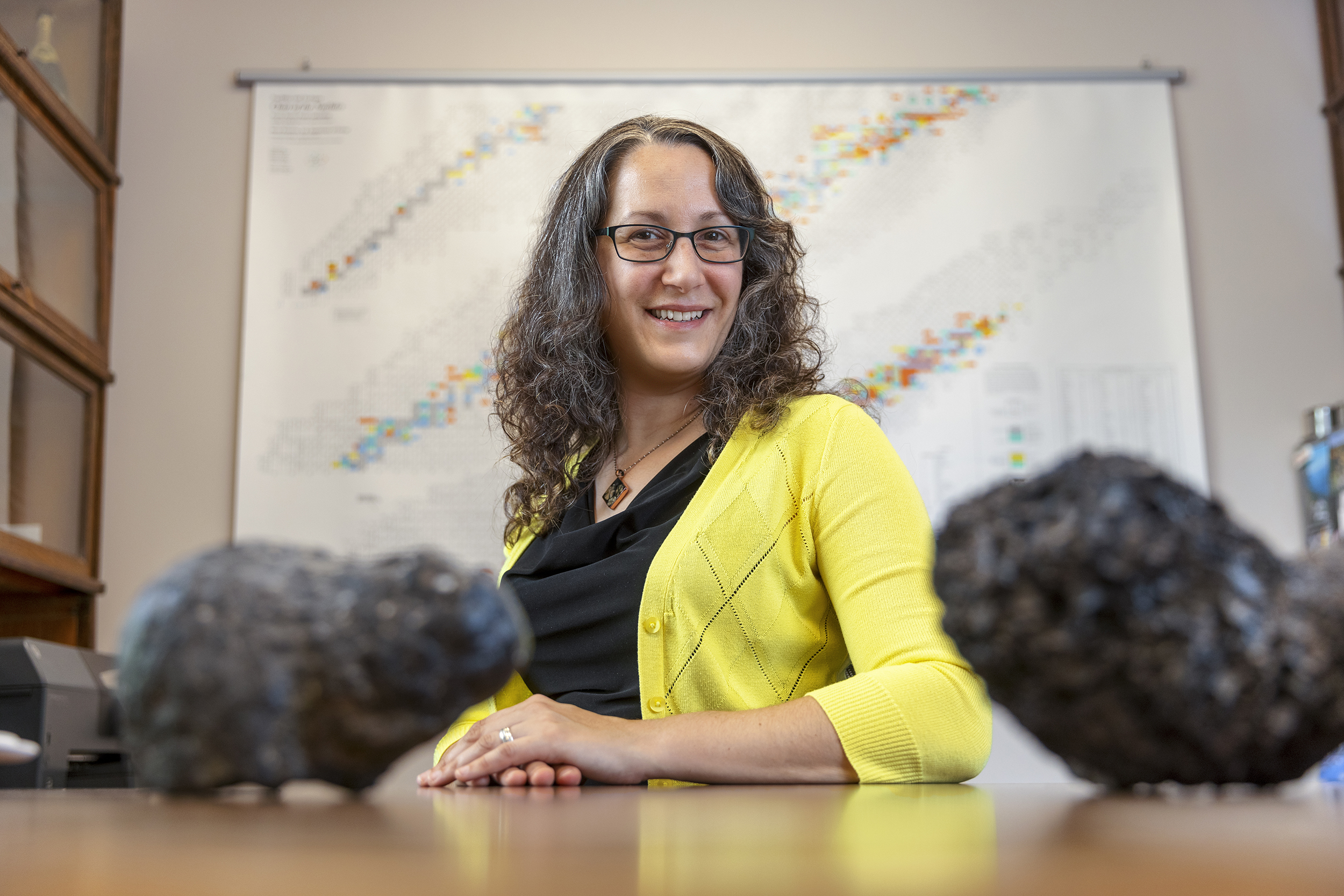
Most people find volcanoes fascinating. But even the world’s best scientists don’t fully understand exactly what happens deep inside the Earth to trigger them, why they happen in certain locations, and what processes generate the magma that eventually breaks through the surface as lava.
With a five-year, nearly $700,000 grant from the National Science Foundation’s Faculty Early Career Development Program, Husker geochemist Lynne Elkins is developing a tool that may shed light on some of those processes, particularly those that govern the makeup and movement of magma, the molten rock located deep under the Earth’s surface. The project will produce a publicly available, open-source computer modeling program to calculate the expected compositions of magma that result from partial melting of the Earth’s mantle layer, which is where most magmas originate. The calculation models focus on predicting trace quantities of uranium-series isotopes in lavas, a type of geochemistry measurement that traces the nature and timing of Earth’s melting processes.
Developing a more comprehensive understanding of those processes will provide scientists important clues about how magma generation is linked to plate tectonics, the formation of the Earth’s crust and the overall workings of the natural world.
“Understanding how the planet works as a whole is important to society,” said Elkins, assistant professor of Earth and atmospheric sciences. “The fundamental question here is, ‘How does the planet function?’ Developing better tools with computer coding makes the answers to this question more accessible to the broader scientific community.”
Elkins said the tool may advance a longstanding debate in the scientific community about what types of mantle rocks melt to generate most magma. Experts broadly agree that peridotite, made mostly of the mineral olivine, makes up about 90-95% of the upper mantle, and that it’s the primary ingredient for generating magma. But while some believe that peridotite is the sole rock that melts to produce most magma, others, including Elkins, believe there may be other rock types at play.
“If that’s the only thing melting, there are variations that we see in lavas that don’t entirely make sense,” Elkins said. “Some of the chemistry of lavas doesn’t make sense if it’s all peridotite.”
Elkins believes pyroxenite, a type of igneous rock, is another component of magma. But testing that hypothesis is difficult because the Earth’s mantle — the layer sandwiched between the crust we walk on and the outer core — is, at 30 miles below the surface, too deep to sample directly. So researchers rely on indirect methods of discerning the mantle’s composition, none of which provide exact results.
One such approach is to measure uranium-series isotopes, which are intermediate steps produced by the radioactive decay of uranium into lead — a process that takes place at a known rate. U-series modeling is valuable in analyzing magma because it’s the only direct measurement that provides information about the timing of events in the mantle, such as melting.
By pinpointing the amount of these intermediate isotopes that are present in a lava rock, scientists can make inferences about how fast a process such as melting must have occurred. And because the melting pace depends on the rock type and the rate of other geologic processes, scientists are also able to study those details.
But interpreting U-series measurements in rocks relies on having accurate calculations and models for comparison. Elkins’ project focuses on creating a more accurate, accessible and reproducible tool for all geochemists to use.
“What’s really useful about U-series is that it’s sensitive to the timing of the process,” Elkins said. “What’s hard is that it doesn’t respond in a simple way to that process, so we need computer models to determine what it should look like. Otherwise, the data are too complex and we can’t interpret it.”
The approach’s complexity is the primary reason that despite its utility, only a small group of geochemists currently uses U-series isotope methods to study lavas. With her tool, Elkins hopes to reinvigorate the method by making results easier to understand. Her project also combines U-series techniques with new, high-precision trace element analytical methods, aiming to more accurately mimic the real-world process of magma generation and transport.
Her computer tool is known as a “porous flow” model. Unlike another major family of geochemical melting models — known as “dynamic melting” — Elkins’ calculation approach conserves mass while still accounting for the fact that liquid, as it moves through the mantle, may not always be in close contact with the solid it originated from. Like dynamic melting models, the tool accounts for chemical disequilibrium or rate-dependent chemical equilibration, but it includes a more sophisticated constraint on the porous migration of liquid magma.
Some aspects of the model may even have applications in other disciplines, such as water chemistry and natural resources.
One of Elkins’ primary goals is making the tool freely accessible to other researchers, students and the broader public, which aligns with the university’s commitment to the Grand Challenge of science and technology literacy for society.
Elkins will incorporate the modeling package into her courses at Nebraska. She will teach advanced and graduate geology students how to use coding techniques and porous flow models as part of a new geoscience course focused on magma generation and modeling techniques. The course will be the first of its kind at the university.
Elkins is also launching a tutorial website, hosted on an open-source teaching repository, featuring example code and lesson plans focused on the relationships between mantle melting and production of the Earth’s crust. The site targets students and scientists with limited access to this type of resource, with the ultimate goal of diversifying the STEM workforce and strengthening STEM education.
The National Science Foundation’s CAREER award supports pre-tenure faculty who exemplify the role of teacher-scholars through outstanding research, excellent education and the integration of education and research.








